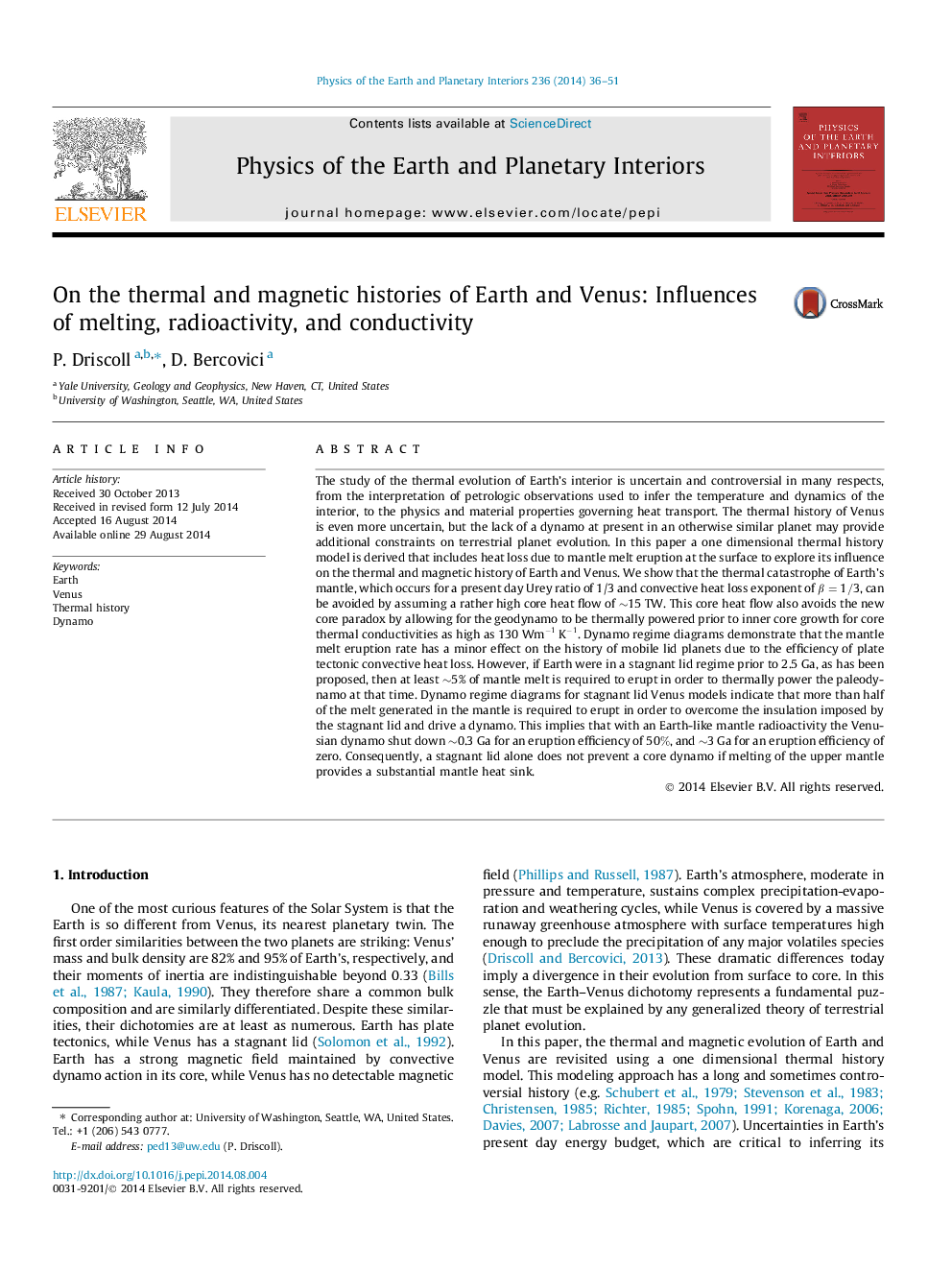| کد مقاله | کد نشریه | سال انتشار | مقاله انگلیسی | نسخه تمام متن |
|---|---|---|---|---|
| 4741447 | 1641505 | 2014 | 16 صفحه PDF | دانلود رایگان |
• Thermal catastrophe and new core paradox avoidable with a core heat flow of 15 TW.
• Core heat flow of 15 TW (2 TW radioactivity) predicts inner core age only 0.5 Gyr.
• Stagnant lid does not preclude a core dynamo if mantle melting is energy sink.
The study of the thermal evolution of Earth’s interior is uncertain and controversial in many respects, from the interpretation of petrologic observations used to infer the temperature and dynamics of the interior, to the physics and material properties governing heat transport. The thermal history of Venus is even more uncertain, but the lack of a dynamo at present in an otherwise similar planet may provide additional constraints on terrestrial planet evolution. In this paper a one dimensional thermal history model is derived that includes heat loss due to mantle melt eruption at the surface to explore its influence on the thermal and magnetic history of Earth and Venus. We show that the thermal catastrophe of Earth’s mantle, which occurs for a present day Urey ratio of 1/3 and convective heat loss exponent of β=1/3β=1/3, can be avoided by assuming a rather high core heat flow of ∼15 TW. This core heat flow also avoids the new core paradox by allowing for the geodynamo to be thermally powered prior to inner core growth for core thermal conductivities as high as 130Wm-1K-1. Dynamo regime diagrams demonstrate that the mantle melt eruption rate has a minor effect on the history of mobile lid planets due to the efficiency of plate tectonic convective heat loss. However, if Earth were in a stagnant lid regime prior to 2.5 Ga, as has been proposed, then at least ∼5% of mantle melt is required to erupt in order to thermally power the paleodynamo at that time. Dynamo regime diagrams for stagnant lid Venus models indicate that more than half of the melt generated in the mantle is required to erupt in order to overcome the insulation imposed by the stagnant lid and drive a dynamo. This implies that with an Earth-like mantle radioactivity the Venusian dynamo shut down ∼0.3 Ga for an eruption efficiency of 50%50%, and ∼3 Ga for an eruption efficiency of zero. Consequently, a stagnant lid alone does not prevent a core dynamo if melting of the upper mantle provides a substantial mantle heat sink.
Journal: Physics of the Earth and Planetary Interiors - Volume 236, November 2014, Pages 36–51
